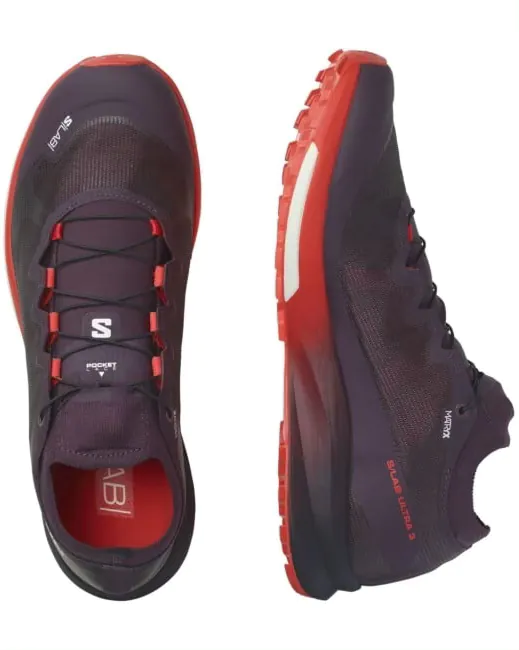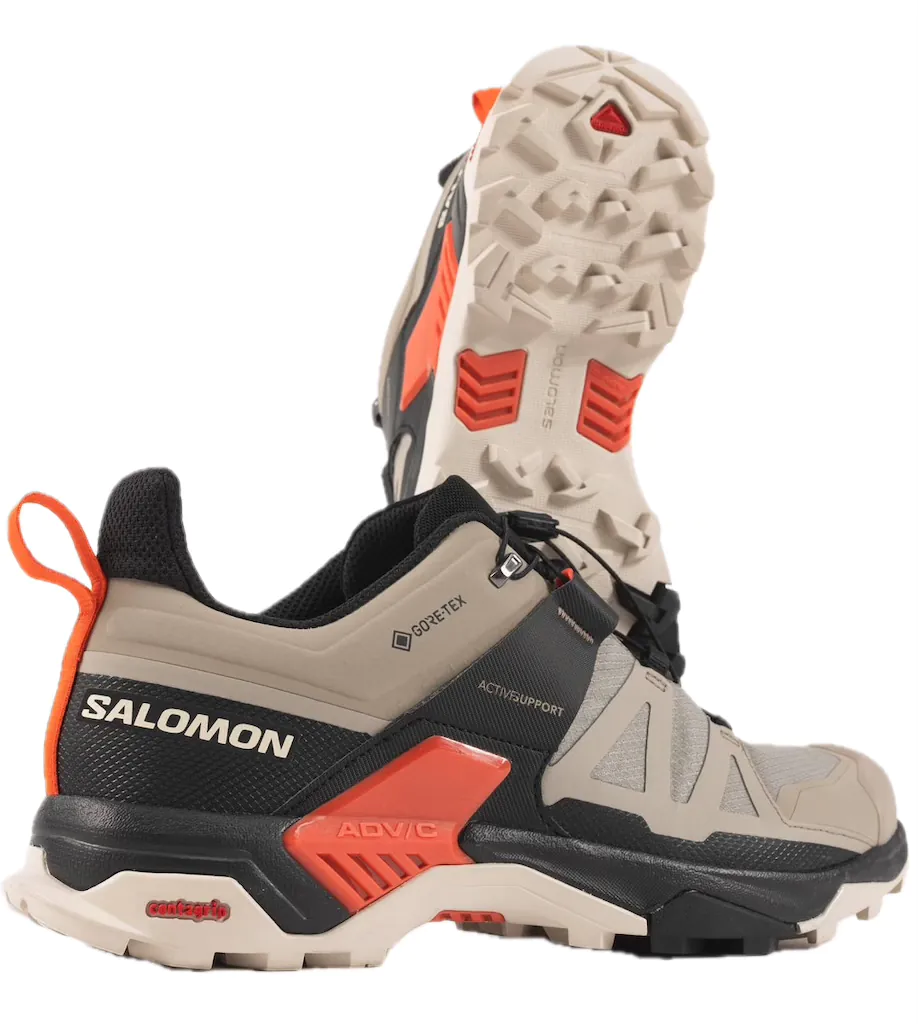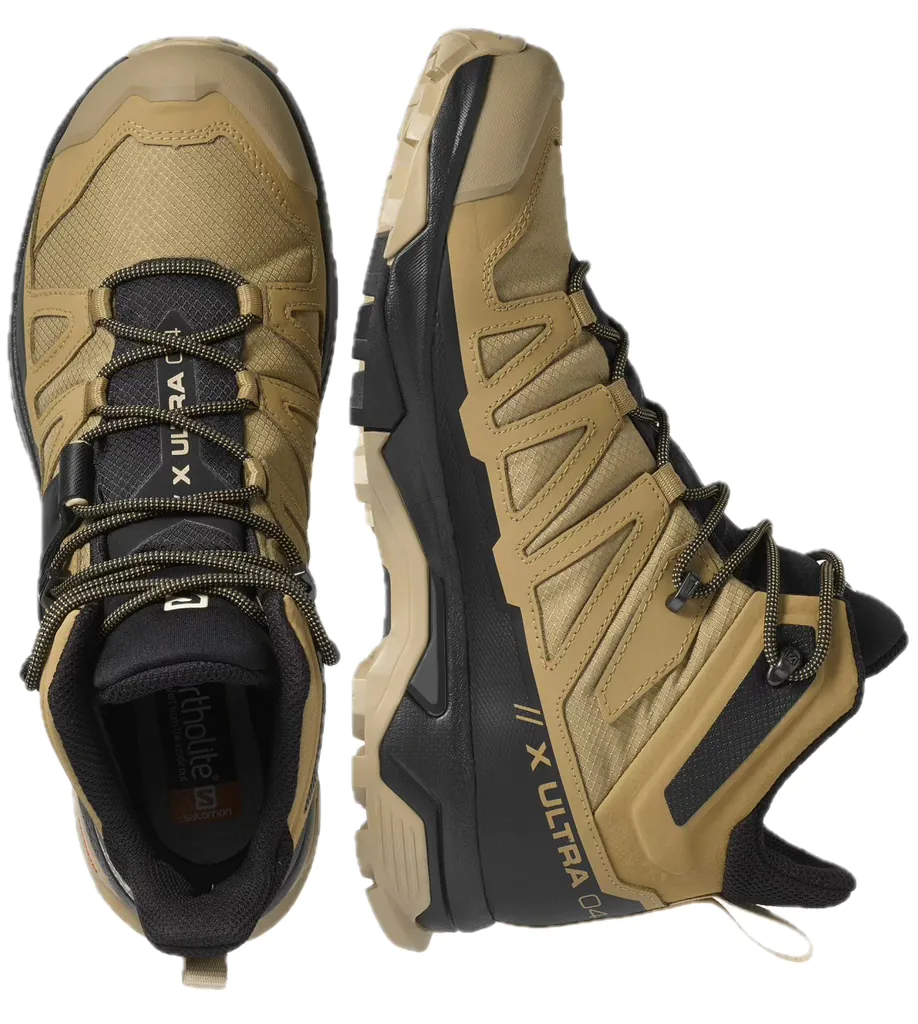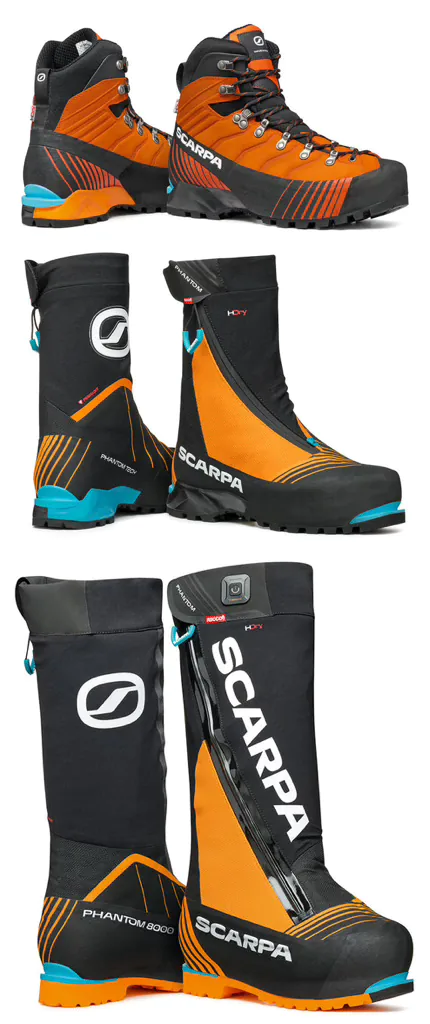Boots
Your boots are the most important piece of gear. The right footwear for your outdoor adventures can make or break your experience. Choosing the boots which are fit to the task and, more importantly, to the feet - is probably the hardest quest, requiring most effort and, most often, investment.
Whether you're going for a short hike, a technical climb, or a multi-day backpacking trip, the right pair of boots or shoes will provide the support, protection, and comfort you need. There is no one-size-fits-all when it comes to hiking and mountaineering boots. The best choice depends on your specific needs, terrain, and hiking style.
This comprehensive guide breaks down the different types of hiking and mountaineering footwear, with pros and cons, and the best use cases for each, to make the choice easier for you.
Trail-Running Shoes
Trail-running shoes are designed for speed, agility, and comfort over uneven terrain. Constructed with lightweight synthetic mesh uppers, EVA foam midsoles, and rubber outsoles with aggressive lugs, these shoes prioritise breathability and flexibility. Compared to hiking shoes and boots, they offer minimal protection and ankle support, but are significantly lighter (250-400g per shoe) and cheaper (typically between €70 and €150). Trail-running shoes are some of the most comfortable options due to their cushioned soles, but they are not made for rough or wet environments. Durability is average, typically lasting 500-800 km depending on use and terrain.
Pros:
- Lightweight and breathable
- Good grip and flexibility
- Quick-drying
Cons:
- Limited ankle support
- Less durable for long-term use
- Minimal protection from rough terrain
Best for: day hikers, ultralight backpackers, and trail runners on well-maintained or moderate trails.

Hiking Shoes
Hiking shoes are low-cut footwear that bridge the gap between trail runners and hiking boots. They are usually made with synthetic uppers or leather, feature sturdier midsoles for better support, and have more rigid soles for traction and stability. Weighing between 350-500g per shoe and costing around €80 to €180, they are a popular choice for those wanting more durability and support than trail runners without the bulk of boots. Comfort levels are high, but they are not as versatile on extremely rugged or snowy terrain. Durability is good, often lasting 800-1200 km.
Pros:
- More durable than trail runners
- Comfortable and easy to break in
- Low-cut for mobility
Cons:
- Less supportive than boots
- Not ideal for heavy loads or very rough terrain

Hiking Boots
Hiking boots are the go-to footwear for hikers tackling more demanding terrain. Constructed with leather or tough synthetic materials, they offer high-cut ankle support, robust outsoles, and cushioning for load-bearing. They are more protective and stable than hiking shoes but also heavier (500-800g per boot). Prices vary from €100 to €300. Though less comfortable out-of-the-box, once broken in, they provide excellent all-around performance and are more versatile for different trail conditions. Durability is high, often lasting 1000-1500 km or more. They range between day hiking boots (lighter, more flexible), and heavy hiking boots (maximum support and durability), midweight ones being most balanced. Due to technological advances, this boot category is becoming the most popular one.
Pros:
- Excellent ankle support
- Better protection from rocks and debris
- Suitable for uneven terrain
Cons:
- Heavier than low-cut shoes
- Longer break-in period
- Less breathable
Best for: hikers tackling rugged terrain, moderate to heavy loads, and longer treks.

Backpacking Boots
Backpacking boots are engineered for long-distance travel with heavy loads over challenging terrain. They feature high-cut leather or durable synthetic uppers, thick and stiff midsoles for support, and deep-lugged outsoles for grip. Weighing between 600-1000g per boot and costing from €150 to over €300, they are among the most rugged and long-lasting footwear. While not the most comfortable initially, they become reliable with break-in. Their construction makes them less universal for casual hikes but essential for serious wilderness trekking. Durability is very high, often exceeding 1500 km with proper care.
Pros:
- Superior support and stability
- Durable and long-lasting
- Designed for multi-day use
Cons:
- Heavy and rigid
- Requires substantial break-in time
- Can be overkill for casual hiking

Approach Shoes
Approach shoes are hybrids between hiking shoes and climbing shoes. They use sticky rubber outsoles for grip on rock and sturdy toe caps for protection during scrambles. Upper materials are often suede or synthetic mesh for breathability and durability. Lighter than hiking boots (300-600g per shoe) and costing €80 to €200, they excel in versatility for climbers but can lack cushioning for long hikes. They are comfortable for short to moderate distances but not universal for all terrain types, especially in wet or muddy conditions. Durability is good, typically 800-1200 km. They range between more technical (more climbing-oriented, stickier rubber soles) and more casual (comfort and versatility) models.
Pros:
- Excellent grip on rock
- Lightweight and agile
- Good for scrambling
Cons:
- Limited cushioning for long hikes
- Not great for wet or muddy conditions
Best for: scrambling, rock approaches, climbers hiking to crags or alpine routes.

Mountaineering Boots
Mountaineering boots are built for extreme environments and technical climbing. Constructed with insulated materials, rigid midsoles, waterproof membranes, and crampon-compatible soles, they are designed for ice, snow, and alpine use. These boots weigh from 500g to 1.5kg+ per boot and cost between €200 and €700+. Comfort is secondary to performance and insulation, making them an overkill for any type of casual use but irreplaceable in cold, vertical terrain. They are not universal outside of mountaineering or winter hiking contexts. Durability is excellent, built to withstand abrasive environments and temperature extremes over many expeditions. Mountaineering boots come in 3 main ranges:
- Single boots - one-layer design, lighter, less insulation, often with semi-automatic crampon compatibility, mostly up to 4000m-5000m peaks.
- Hybrid boots - combination of layers in a single construction, automatic crampon compatibility, for 6000m-7000m peaks, well suited for ice climbing.
- Double boots - removable inner boot, better insulation for high-altitude, automatic crampon compatibility, for 6000m-8000m+ peaks.
Pros:
- Insulated and weather-resistant
- Compatible with crampons
- Rugged and durable
Cons:
- Heavy and stiff
- Expensive
- Overkill for anything non-mountain related
Best for: mountaineering, ice climbing, high-altitude expeditions.

Tips for Choosing the Right Footwear
Assess your terrain: rocky, muddy, snowy, or groomed trails all require different footwear.
Consider your load: heavier packs require sturdier boots.
Think about the duration: longer trips may benefit from more supportive footwear.
Check the fit carefully: always try on boots with hiking socks, ensure space for toes and heel stability.
Break them in: never start a long trip in brand-new boots.
Weather readiness: consider waterproofing, insulation, and breathability.
Shoe weight matters: heavier boots fatigue legs faster - balance weight with needed support.
Durability counts: choose footwear that matches the frequency and intensity of your hikes.
| Type | Weight (g/shoe) | Price (€) | Comfort | Versatility | Durability (km) | Best Use |
|---|---|---|---|---|---|---|
| Trail-Running Shoes | 250-400 | 70–150 | High | Low | 500-800 | Day hiking, trail running |
| Hiking Shoes | 350-500 | 80–180 | High | Medium | 800-1200 | Light hiking, short backpacking trips |
| Hiking Boots | 500-800 | 100–300 | Medium | High | 1000-1500 | Moderate to rugged hiking |
| Backpacking Boots | 600-1000 | 150–300+ | Medium | Medium | 1500+ | Multi-day treks with loads |
| Approach Shoes | 300-600 | 80–200 | Medium | Medium | 800-1200 | Climbing approaches, scrambling |
| Mountaineering Boots | 500-1500+ | 200–700+ | Low | Low | 1500+ | High-altitude, icy climbs, crampon use |